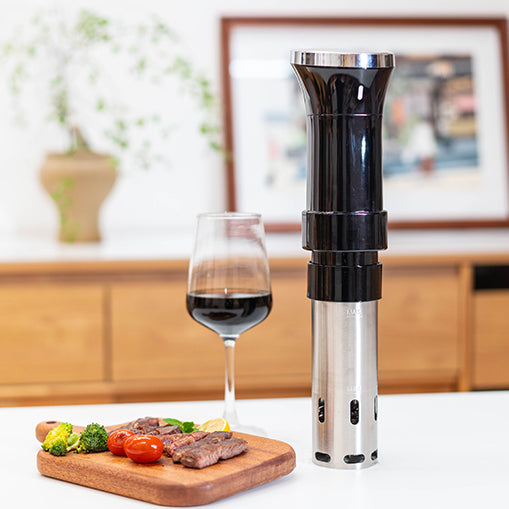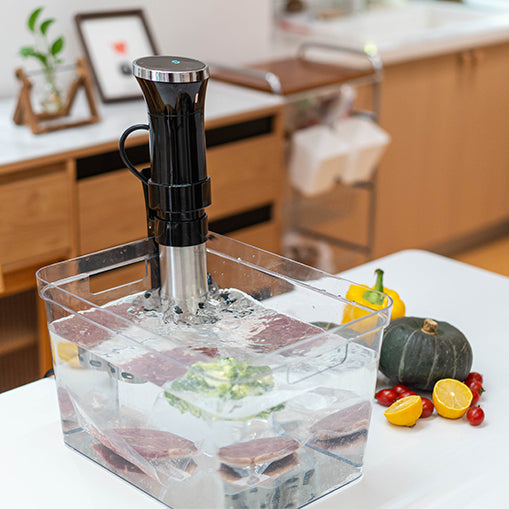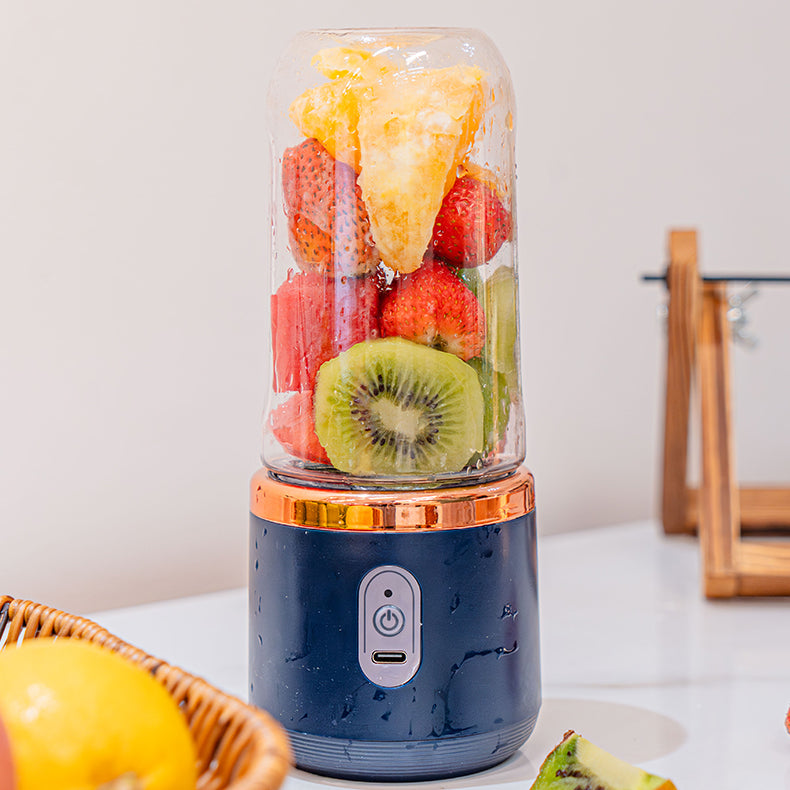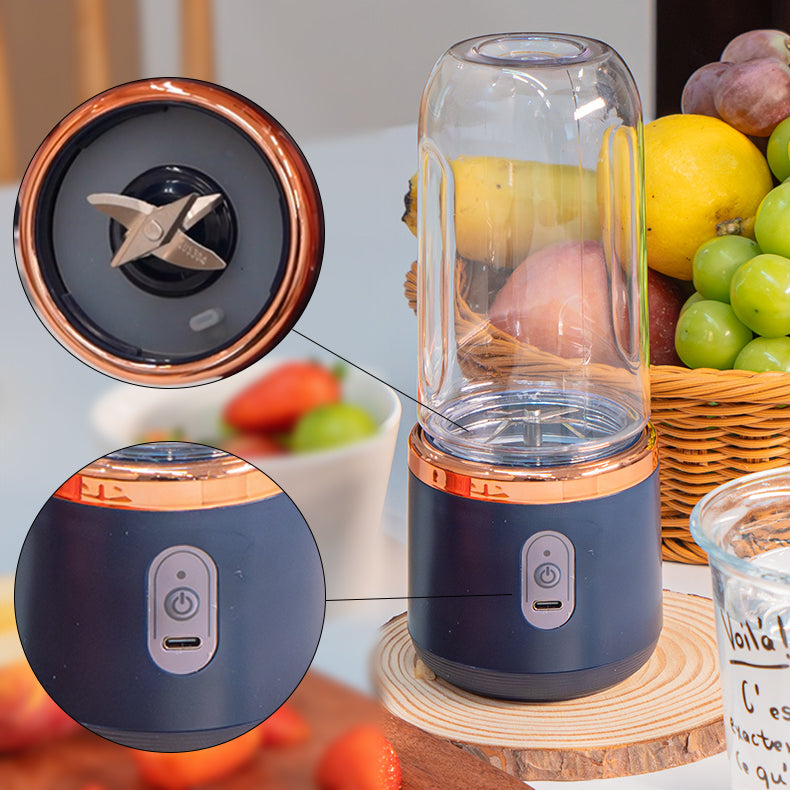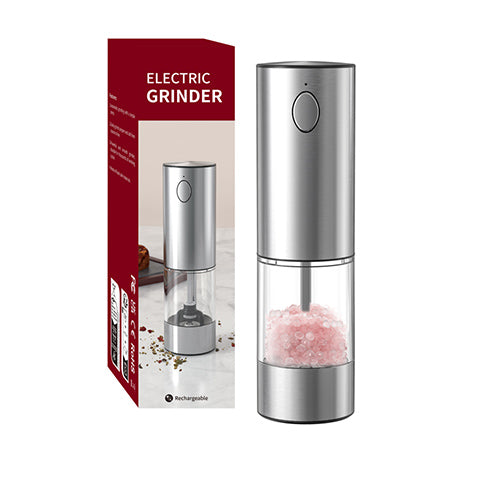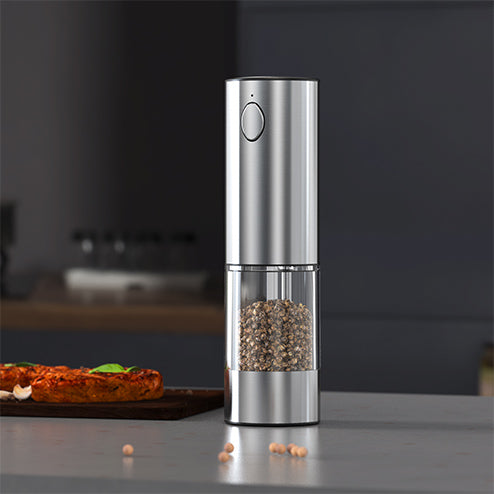Sous vide cooking, a technique once reserved for high-end restaurants, has steadily made its way into home kitchens, promising precision and perfection in every dish. Immersing vacuum-sealed food in a water bath at a carefully controlled temperature ensures consistent results, enhancing flavors and textures like never before. But what exactly is sous vide, how a sous vide works? and why has it become such a game-changer for both professional chefs and home cooks? This guide will explore the ins and outs of sous vide cooking, from its safety and simplicity to the best foods to try and those to avoid. What are you waiting for? Let's get started!

What Is Sous Vide Cooking and Why Should You Try It?
What is sous vide mean? Sous vide, which translates to "under vacuum" in French, is a cooking method. It is achieved by sealing food in a vacuum-sealed bag and then cooking it in a water bath at a precisely controlled temperature. The technique ensures that food is cooked evenly and retains its moisture, creating tender, flavorful dishes. Here are some key benefits of sous vide cooking:
- Precision Cooking: Unlike traditional cooking methods, where the temperature can vary widely, sous vide cooking allows you to cook food to the exact level of doneness you desire without the risk of overcooking.
- Enhanced Flavor and Texture: Because the food is cooked in a vacuum-sealed bag, it retains its natural juices and flavors. The sous vide cooking method is particularly beneficial for meats, which come out tender and juicy.
- Consistency: Sous vide cooking delivers consistent results every time. Whether you’re cooking a steak or vegetables, you can expect the same high-quality outcome.
- Convenience: Sous vide is a relatively hands-off cooking method. Once the food is in the water bath, you can leave it to cook while you attend to other tasks. It’s perfect for busy home cooks who want to prepare meals with minimal effort.
Is Sous Vide Cooking Safe?
Sous vide cooking is safe as long as specific temperature guidelines are followed for different types of food. According to the FDA guidelines, the temperature of vegetables should be 135°F or higher to ensure safety. Intact meats like steaks and roasts are safe at 145°F when held for at least 2 hours to kill pathogens. Ground meats require a higher temperature of at least 155°F to be safe. Poultry should be cooked at 165°F to eliminate any risk of harmful bacteria. Following these temperature guidelines ensures the safety of sous vide cooking.
In addition, you must use bags specifically designed for cooking, such as those labeled as "food-safe" or "sous vide" bags. These bags are made from materials that are free from harmful chemicals like BPA and phthalates, which could leach into food at high temperatures. It’s important to avoid using regular plastic bags, like those intended for storage, as they may not be heat-resistant and could break down during cooking.
How Do You Sous Vide with a Sous Vide Machine?

How does a sous vide work? Getting started with sous vide cooking is easier than you might think. Here’s a step-by-step guide to help you begin your sous vide journey.
1.Gather What You’ll Need: The first step is to select a sous vide machine that suits your needs. There are different types of sous vide machines, including immersion circulators and water ovens. We’ll discuss these in more detail later. You also need some heavy-duty bags, and a few clips.
2.Prep Your Ingredients: Season your food as you would for any other cooking method. Place the seasoned food in a vacuum-sealed bag or a resealable plastic bag with as much air removed as possible.
3.Set the Temperature: Use your sous vide machine to heat the water bath to the desired temperature. The temperature depends on what you’re cooking—steak, for example, is typically cooked at 129°F to 134°F (54°C to 57°C) for medium-rare. Cooking time is not very strict, 1 to 4 hours is okay.
4.Cook the Food: Submerge the bagged food into the water bath. Make sure the food is fully submerged and that the bag is sealed tightly to prevent water from getting in.
5.Finish the Dish: After cooking, some foods like steaks benefit from a quick sear in a hot pan to develop a flavorful crust. This step is optional but recommended for meats.
What Are the Types of Sous Vide Machines?
There are a few different types of sous vide machines available, each with its own advantages. But what is a sous vide machine that is best for sous vide cooking? Here’s a breakdown of the most common options:
Immersion Circulator
It is the most popular type of sous vide machine for home cooks. How does a sous vide circulator work? An immersion circulator attaches to the side of a pot or container and circulates the water to maintain a consistent temperature. They are compact, easy to use, and relatively affordable, making them ideal for home kitchens. A standout choice in this category is the SCHWUA Sous Vide Machine, featuring durable construction, multiple safety mechanisms like water level and high-temperature detection, and app-controlled convenience. Its 3D water circulation system guarantees even, restaurant-quality cooking results every time.
Water Ovens
Also known as sous vide ovens, these are standalone units that come with their own water bath. The water oven is a sous vide cooker that is larger and often more expensive than immersion circulators, but it offers the convenience of an all-in-one device without the need for additional pots or containers.
Homemade Sous Vide Machine Hacks
In addition to buying special equipment for sous vide cooking, you can also creatively use everyday kitchen appliances to replicate the precise temperature control of a sous vide machine. For example, you can use a slow cooker or a rice cooker paired with a digital thermometer and a temperature controller to maintain the desired water bath temperature for sous vide cooking.
Which Foods Are Best for Sous Vide and Which Aren't?

Sous vide cooking is versatile, but some foods are better suited for this method than others. Here’s a quick guide on what you sous vide and what to avoid:
Best Foods for Sous Vide:
- Meats: Steaks, chicken breasts, pork chops, and lamb are excellent choices for sous vide. The precise temperature control ensures that the meat is cooked evenly and remains tender and juicy.
- Fish and Seafood: Sous vide is ideal for delicate proteins like salmon, shrimp, and lobster. It prevents overcooking and helps retain the seafood’s natural flavors.
- Eggs: Sous vide eggs have a unique texture and are a favorite among many chefs. You can cook eggs at a specific temperature to achieve your preferred level of doneness.
- Vegetables: While vegetables require longer cooking times, sous vide helps retain their vibrant color and nutrients. Carrots, asparagus, and potatoes are particularly well-suited for this method.
Foods to Avoid:
- Large Roasts: While sous vide can handle smaller cuts of meat, large roasts may not cook evenly due to their size. Traditional roasting methods are better for these.
- Delicate Greens: Leafy greens like spinach or lettuce can become mushy when cooked sous vide. These vegetables are better suited for quick sautéing or steaming.
- High-Fat Cuts: Fatty cuts of meat, such as brisket or pork belly, don’t benefit as much from sous vide cooking. These cuts are better when cooked using methods that allow the fat to render and crisp, like roasting or grilling.
Conclusion
Sous vide cooking is a game-changer for anyone looking to achieve restaurant-quality results at home. With its precise temperature control and ability to retain flavors and nutrients, sous vide offers a unique way to cook a wide variety of foods. Whether you’re a beginner or an experienced cook, this guide has provided you with the knowledge and tools to get started with sous vide cooking. Remember to choose the right equipment, experiment with different recipes, and enjoy the process of creating delicious, perfectly cooked meals.

